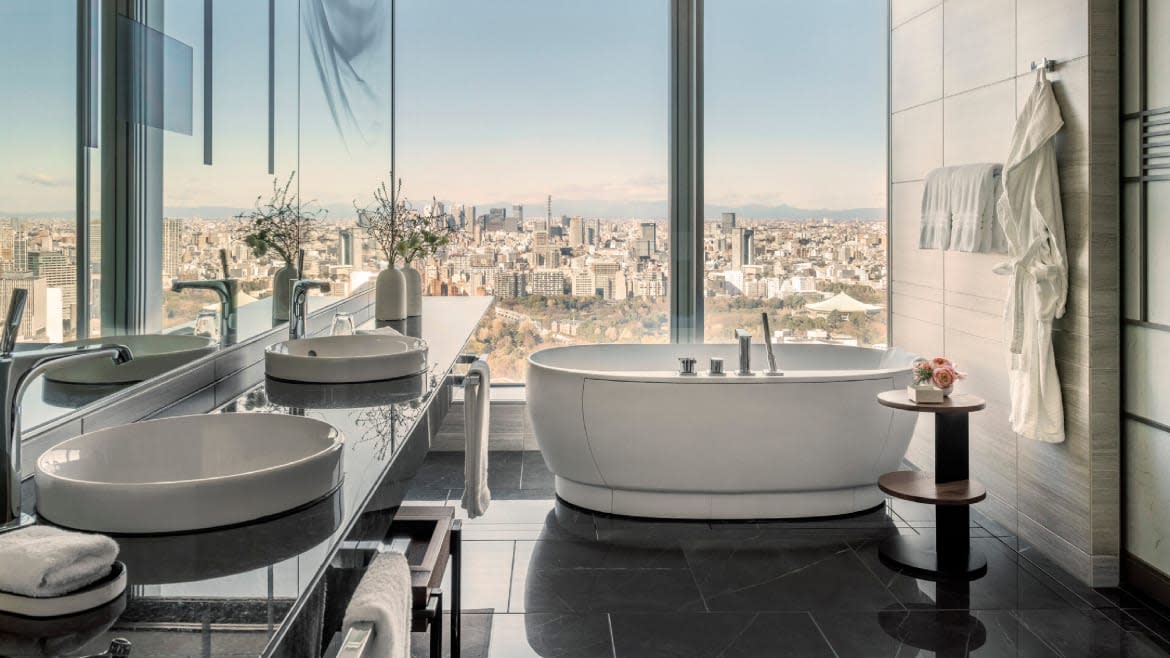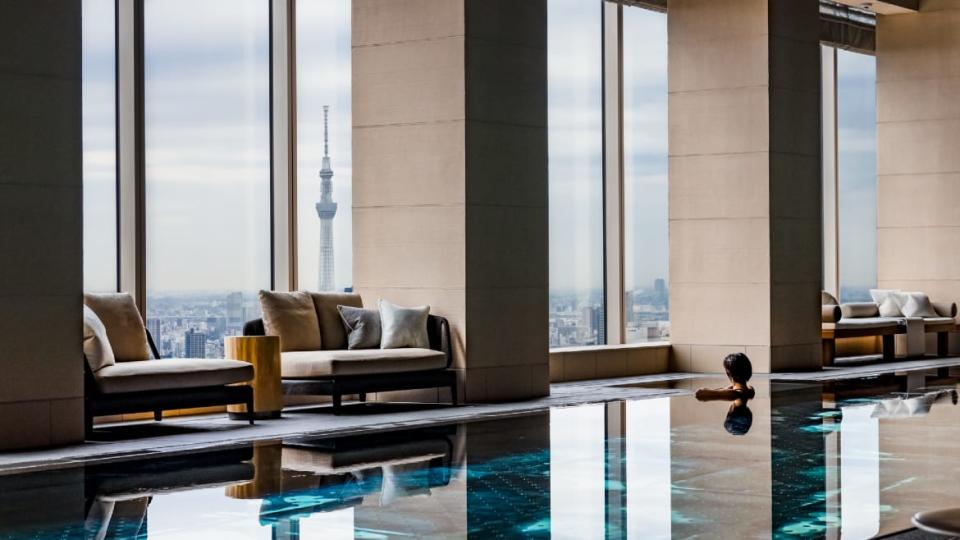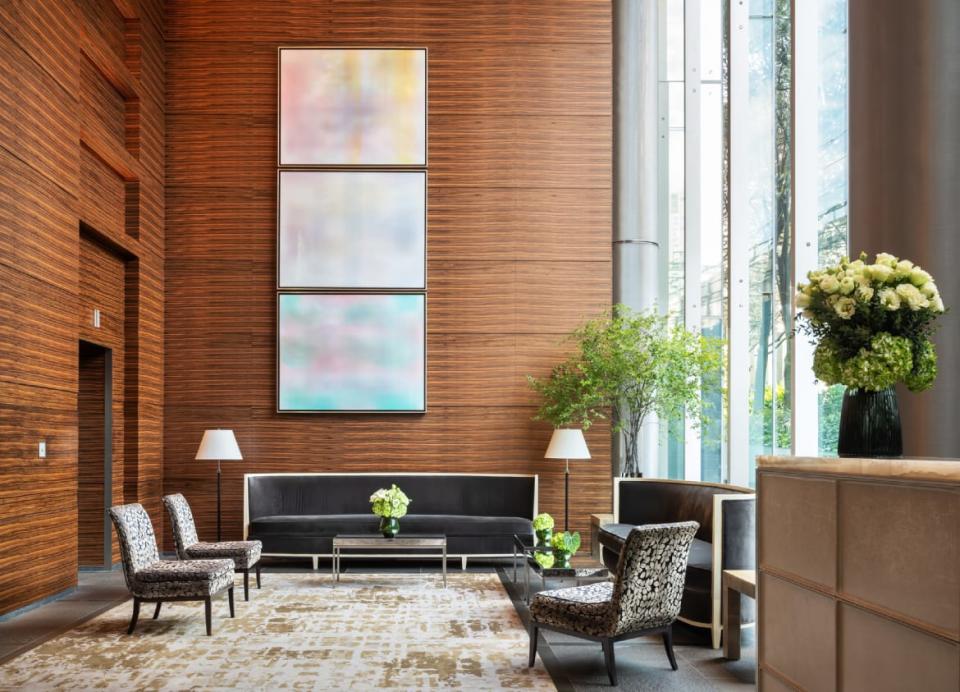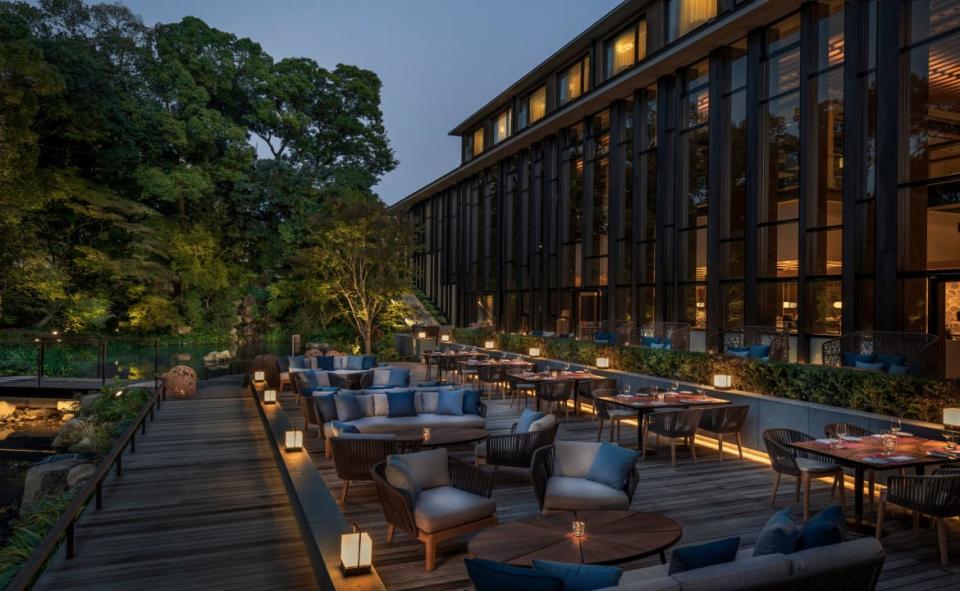Tokyo Has a New Luxury Hotel to Make You Feel Special

Luxury comes in many forms, and in the hotel world many might narrow it down to the number of amenities or the size of a room or even the floor your room is situated. I’d argue today the ultimate luxury is the service you receive. The best view or the biggest suite of the hotel is something everyone can appreciate, including me, but there's nothing in this era of mass tourism like feeling you are special.
I recently visited Japan for the first time, part of a wave of tourists returning to the island nation since it reopened. As this being my first visit, I solicited a lot of advice and stories about other people’s experiences. Over and over, people who had previously visited focused on the incredible hospitality. In Japanese culture there’s a philosophy that comes from the tea ceremony named Omotenashi which means taking care of the guest in the most genuine way possible. As much as the food, nature, or the art, this draws travelers back to Japan over and over. Often, regardless of the hotel, restaurant, or bar you will be served exceptionally well. Since the really great and genuine service is kind of the norm in Japan, well, when you step into a higher end location the experience is incomparable. That was certainly the case when I stayed at the new Four Seasons Otemachi for Beast Travel’s hotel column, Room Key.
The ride from the airport into Tokyo, if you’re not fast asleep due to jet lag, makes clear how enormous the world’s most populous city is. As countless apartment complexes fly by, it’s hard to fathom ever being able to truly wrap one’s hands around this city. The Four Seasons Otemachi opened in 2020 but with the border only reopening in October 2022, the hotel is essentially new for the U.S. market. Located on the building's 39th floor, the 190-room hotel stands in the middle of the city's most significant business district, just a lift ride from the heart of the city. The most breathtaking view of Tokyo's skyline greets you as soon as the lift door opens. A thin strip of water surrounds the 39th floor, separating you from the floor to ceiling windows. The first time I tried to come close to the window, I almost stepped into the small body of water. At first I assumed this detail was added to prevent them from having to constantly clean the windows from people touching the glass– genius, I thought. However, after bringing it up with the hotel manager, this design detail is even more intentional than I could have imagined and speaks loudly of the importance of respect in Japanese culture. The strip of water was added so that guests wouldn't be looking down on people on the street as a form of respect.
Once I got to my room I was pleased to find out the view followed me all the way to my room.
The Imperial Palace and the park that surrounds it, and, further out, the beautiful Mount Fuji could be seen beyond the city's tall suburbs. With views that dramatic, all the room’s decoration seemed designed to focus on those vistas. It follows you all the way into the bathroom where you have a standing bathtub facing the view.

Keeping up with the gym is really difficult when you're constantly on the go, often because hotel gyms are, frankly, depressing. Here you can’t use that excuse. In fact, once I entered the gym and pool of this hotel I couldn’t resist posting it to show how out of this world it is. If you get up early enough, you can work out surrounded by the many colors emerging at dawn as this corner gym has a mirror running along its face that gives the impression that you are surrounded by the cityscape.
A common fear when staying at any international brand hotel in a foreign city is that you’ll be isolated, that you’ll be in a bubble of other foreigners. But if you pop down to the afternoon tea the hotel arranges, you’ll actually find yourself surrounding by Tokyoites gathered here for the tea and specialty pastries.
The hotel’s signature dining option is Est, a French restaurant run by Chef Guillaume Bavriat that serves food made with locally obtained Japanese ingredients. Think duck from Wakayama paired with gobo, a Japanese root similar to salsify, an ingredient found in some French cooking. The tasting menu ranging from 5-10 courses at this one-Michelin-star establishment is contemporary in its emphasis on freshness and creative fusing of cuisines.You’ll always have lots of opportunities to drink on vacation, but if you enjoy tea, try the menu's cold tea pairing. The combo brought forth such unique flavors in the food you’d be unlikely to experience or notice otherwise.
Before calling it a night or heading out to take on Tokyo’s nightlife, make sure to stop at Virtu. This bar oozes warmth in a sort of modern clubhouse way, with gleaming polished woods, dramatic lighting, accents of crimson and gold, and leather chairs. In fact, don’t be surprised if you intend to pop in for just one drink before heading out and instead you find yourself still ensconced on its banquettes a few cocktails later.

During my stay in Tokyo I also called on the hotel group’s other property in the city, the Four Seasons Hotel Tokyo at Marunouchi. If Otemachi is awe-some with its views and rich details, Marunouchi is more intimate with only 57 cozy rooms covered in light wood from floor to ceiling–a respite from the megacity. It also plays host to the famous kitchen of Chef Daniel Calvert, his two-Michelin star restaurant Sézanne. Conveniently, the hotel is located right by the train station which makes it perfect for the typical first-time visitor’s next stop–Kyoto.
Since I was that cliche first-time visitor, I headed to the old capital city after staying at the Marunouchi property. I spent three weeks in Japan, traversing from Tokyo down to Kyoto, Osaka, Hiroshima, Naoshima, and back to Kyoto and Tokyo. Every one of those places had something memorable, but my favorite was undoubtedly Kyoto.

It’s a city steeped in history, beauty and tradition. The Four Seasons has leaned into all those attributes with its property here, Four Seasons Kyoto, which is about 10-minute drive from downtown. It’s constructed around the 800-year-old Shakusui-en Ikeniwa (pond garden). It has the feel of a haven that fosters a sense of connection with the natural world. This four-story property's minimalist architecture, which has crisp, clean lines, floor to ceiling windows, and neutral-colored walls, seamlessly melds the inside and the outdoors for a seamless, visually soothing experience.
Get the Daily Beast's biggest scoops and scandals delivered right to your inbox. Sign up now.
Stay informed and gain unlimited access to the Daily Beast's unmatched reporting. Subscribe now.

